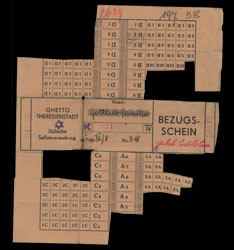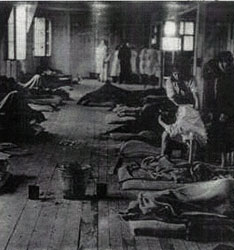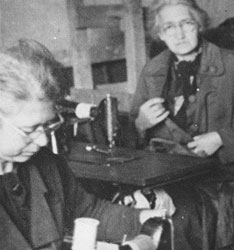
Surviving the Inhumanity, 1942–1945
All of the scraps and pieces of paper Camilla held onto documented her life in the concentration camp, where friends constantly disappeared, and some 33,000 died.
The Nazis used Camilla’s skills as a seamstress in Theresienstadt; this may have ensured her survival. She worked more than eleven hours a day sewing German uniforms. Severe restrictions and deprivations characterized life in the camp. After Hermann died of a lung infection in 1943, Camilla suffered alone in cramped barracks on limited food rations.
Ration coupon, about 1942
The Theresienstadt Jewish Council issued Camilla this ration coupon—Bezugsschein—signed by council chairman Jacob Edelstein. He was later deported to Auschwitz, Poland, and murdered.
Identity paper and work classification, about 1942
Camilla was required to carry this identity paper that listed her name, residence, date of birth, and the rules of compliance. Her work classification indicated she was a “dressmaker” who made and repaired uniforms. The other segment recorded her illnesses, the result of rampant disease and malnutrition in the camp. She had scarlet fever in 1942.
Prisoners on thin mattresses on the barracks floor in the women’s camp of the Theresienstadt ghetto in Czechoslovakia, between 1941 and 1945 (Courtesy of YIVO Institute for Jewish Research, New York)




